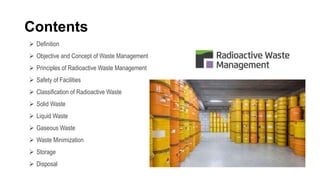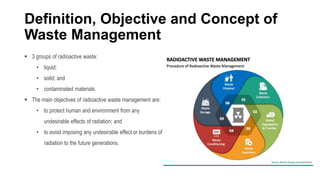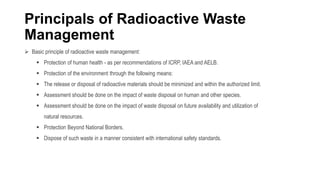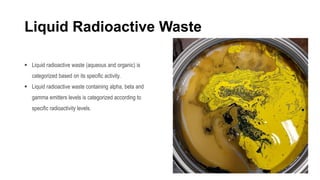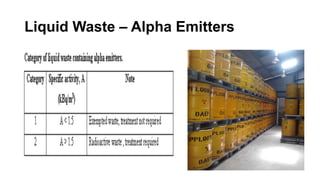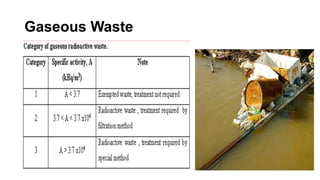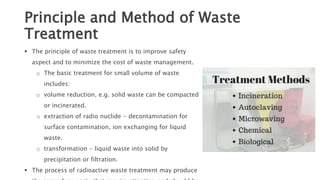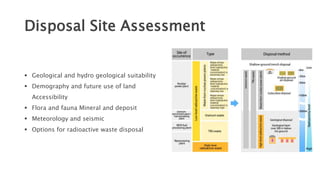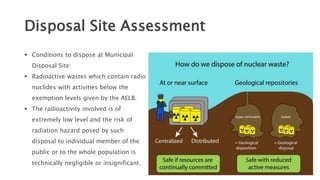Radioactive waste management involves the proper handling, treatment, storage and disposal of radioactive waste. There are various principles that must be followed, including protecting human health and the environment, minimizing waste generation, and avoiding undue burdens on future generations. Radioactive waste is classified based on its physical form, activity level and half-life. Key aspects of management include waste minimization, conditioning, storage, and disposal methods like shallow land burial and deep geological disposal. Proper record keeping is also important. The overall goal is to ensure the safety of workers, the public and the environment.

